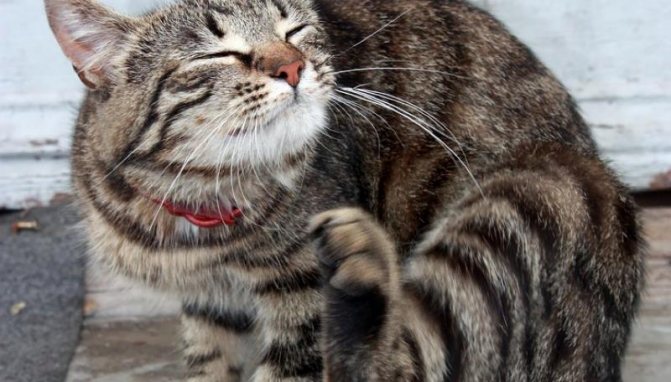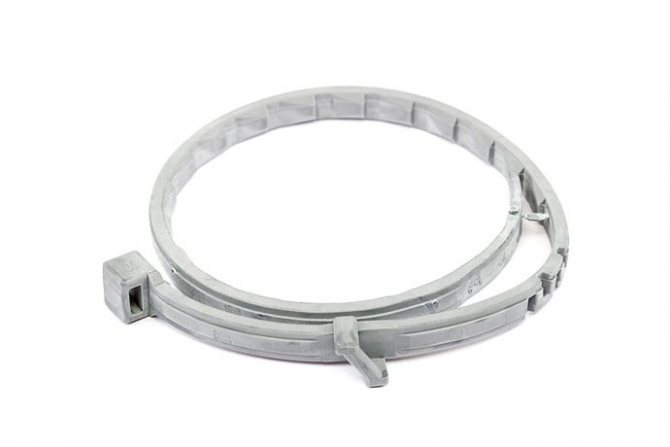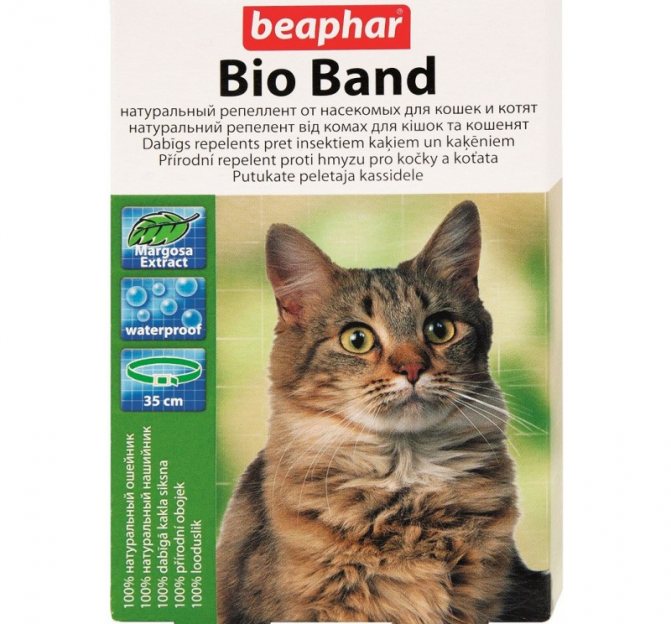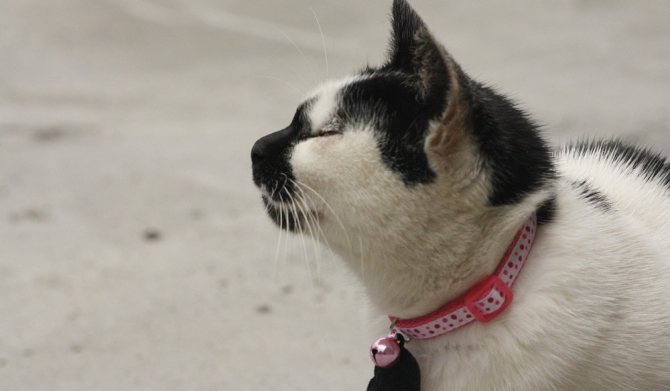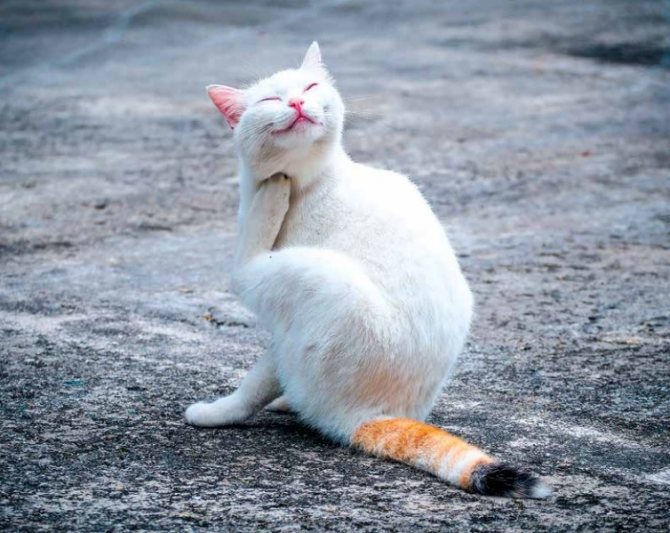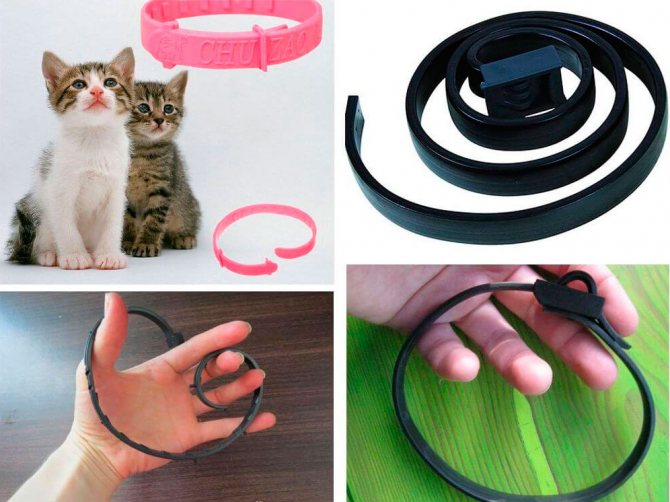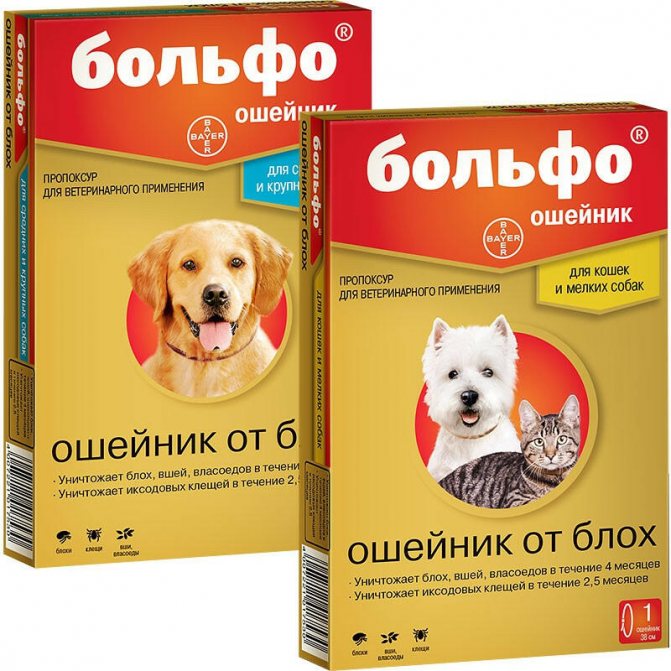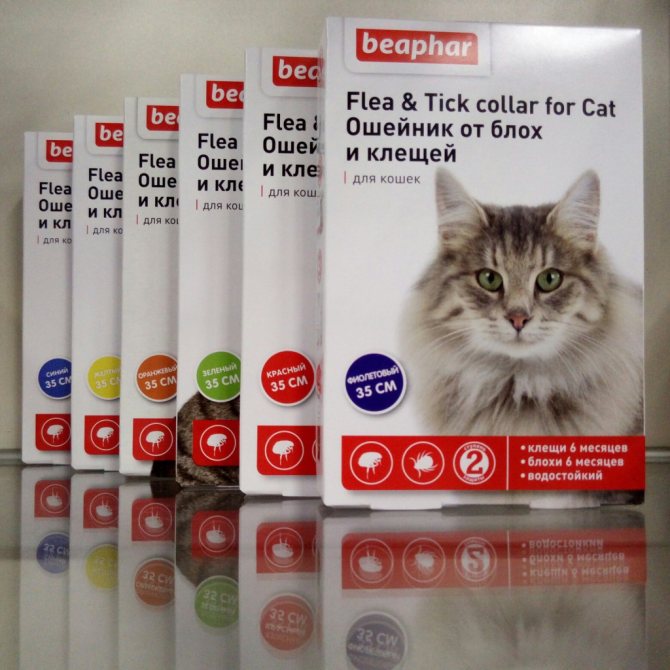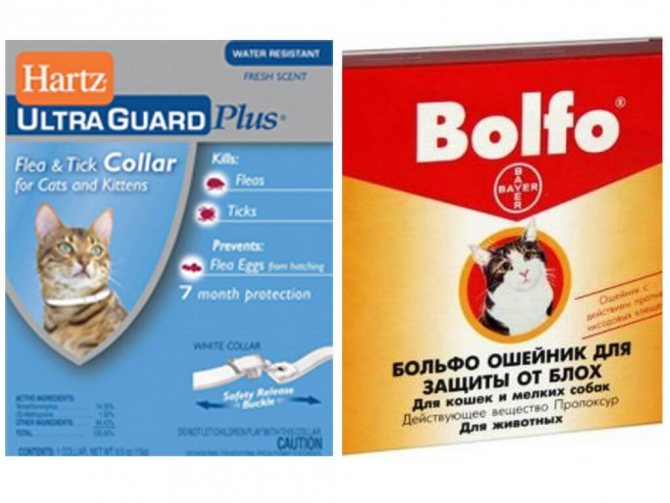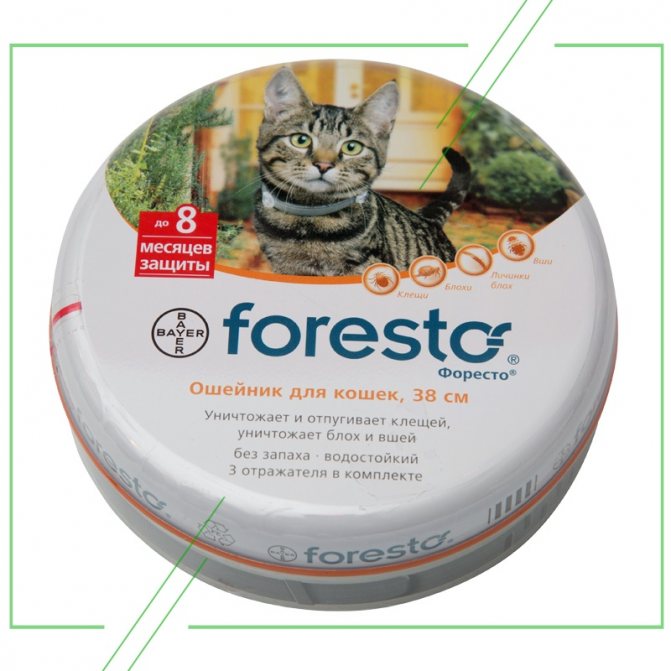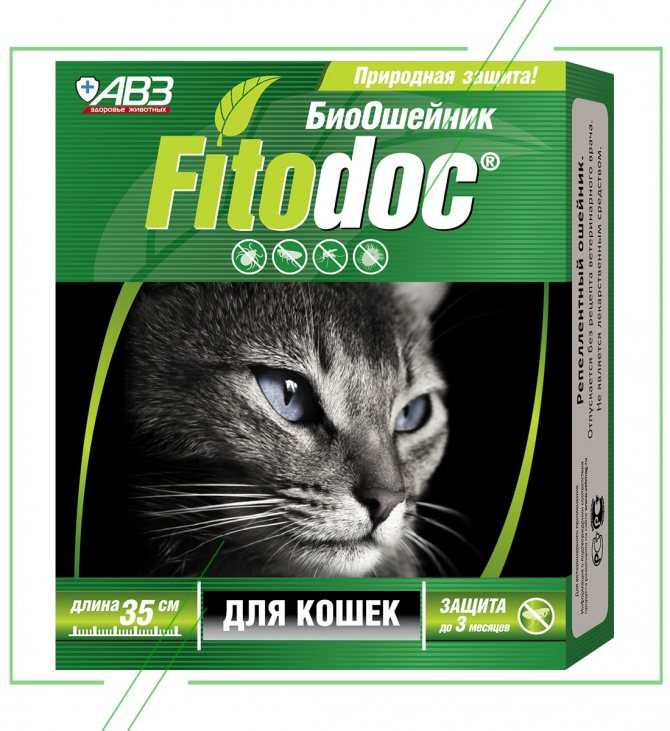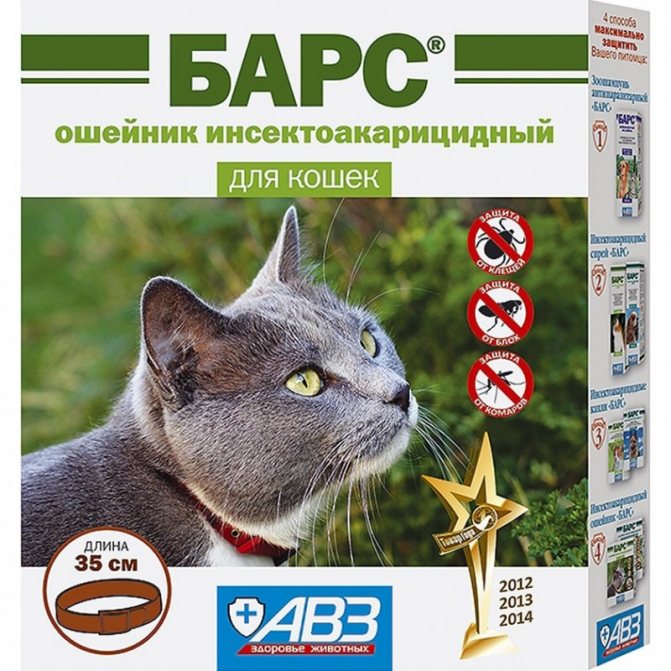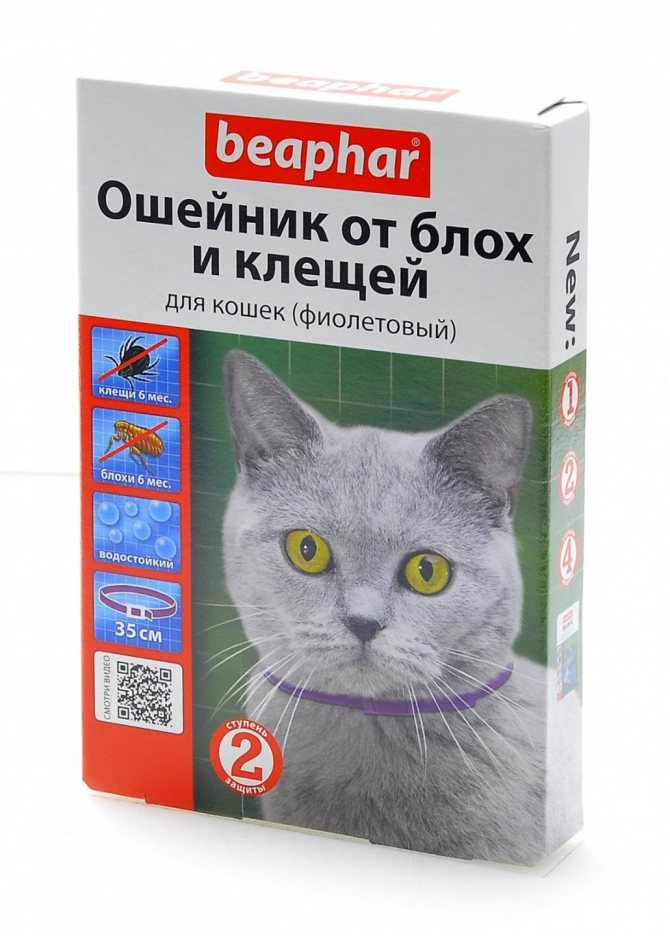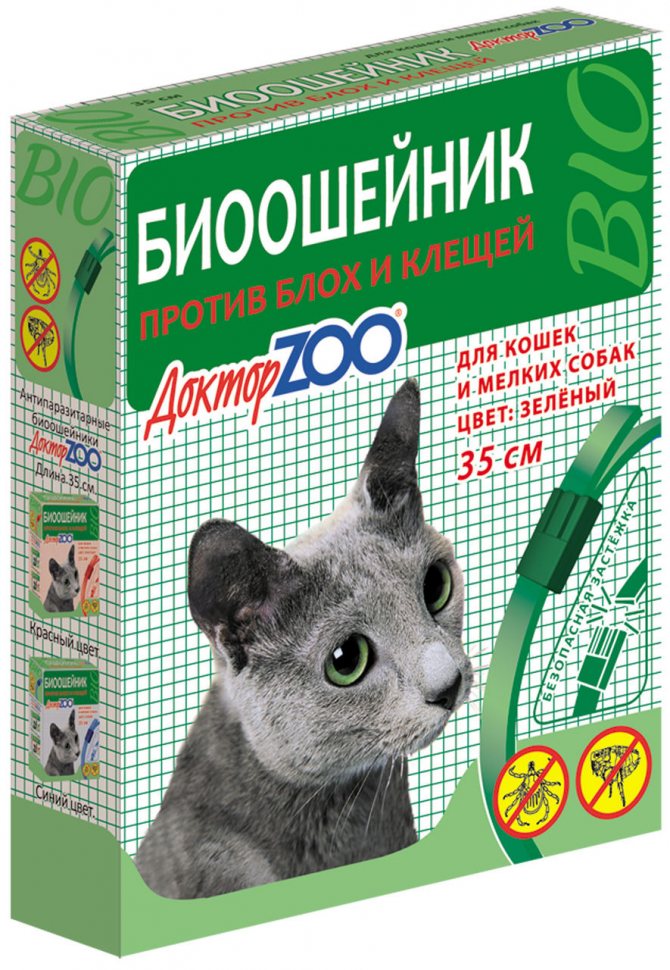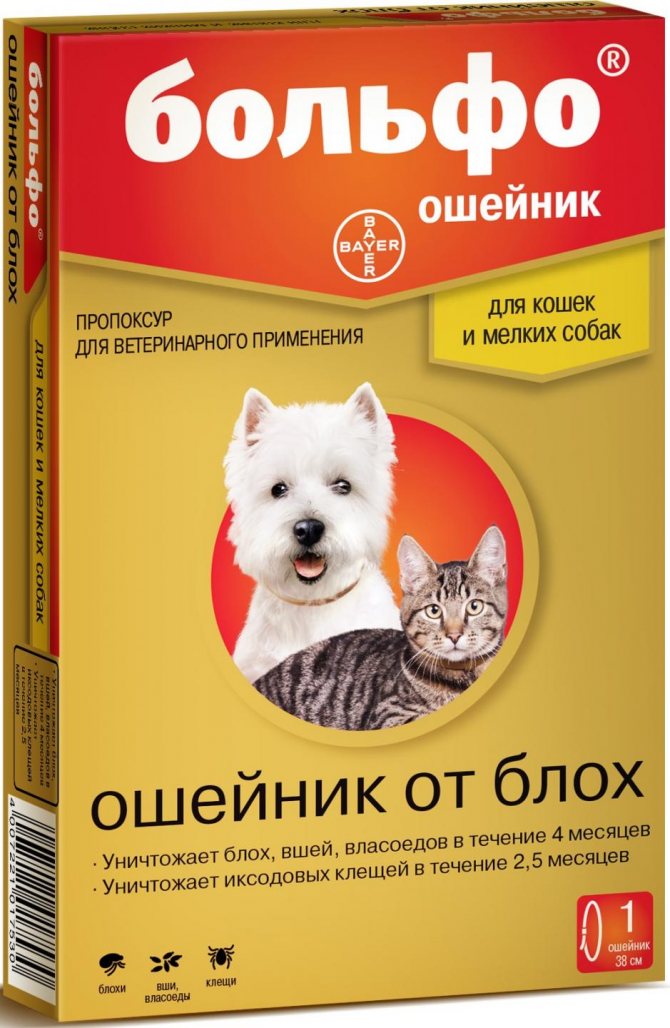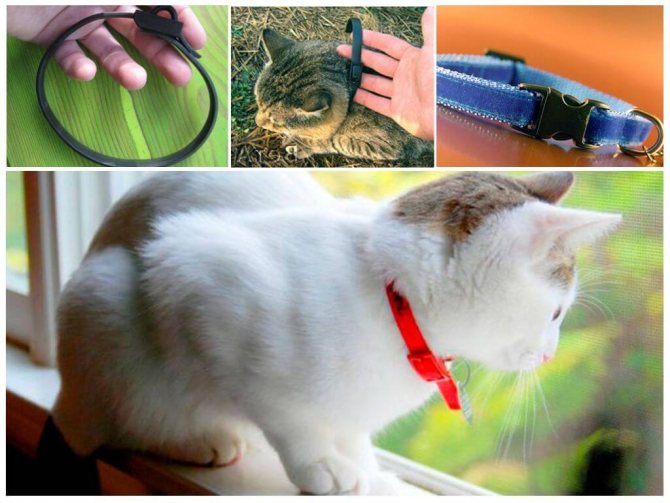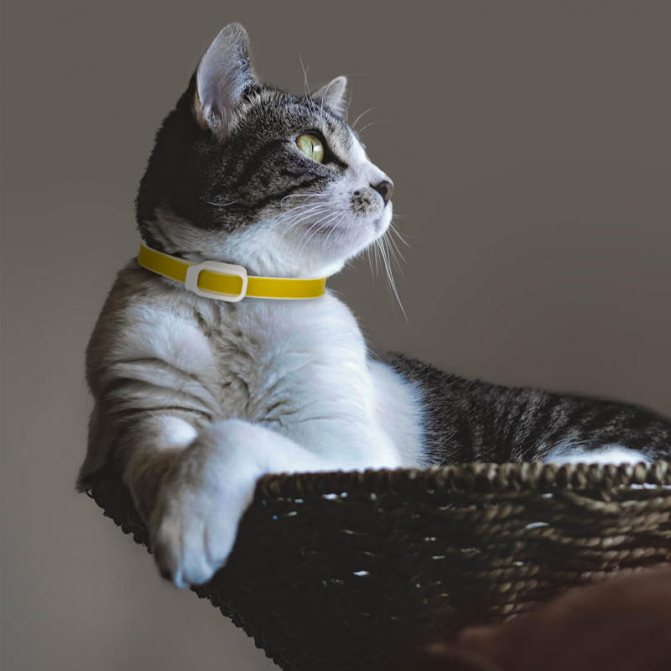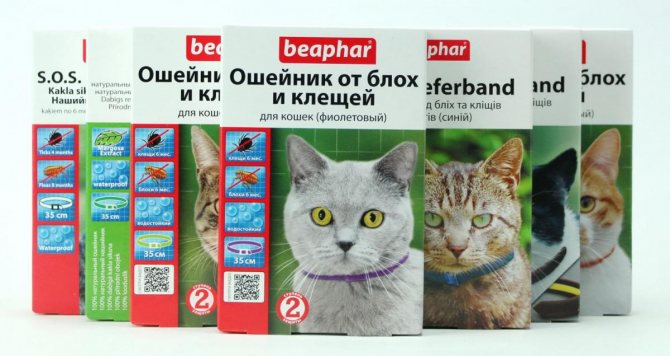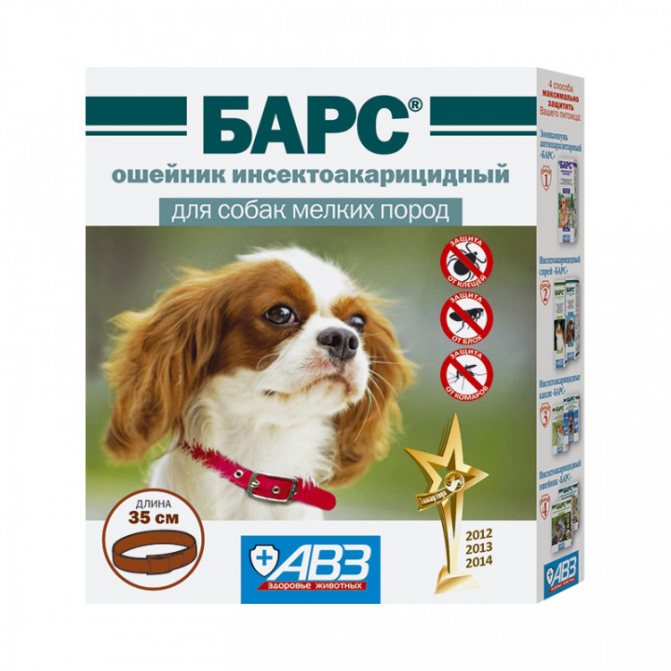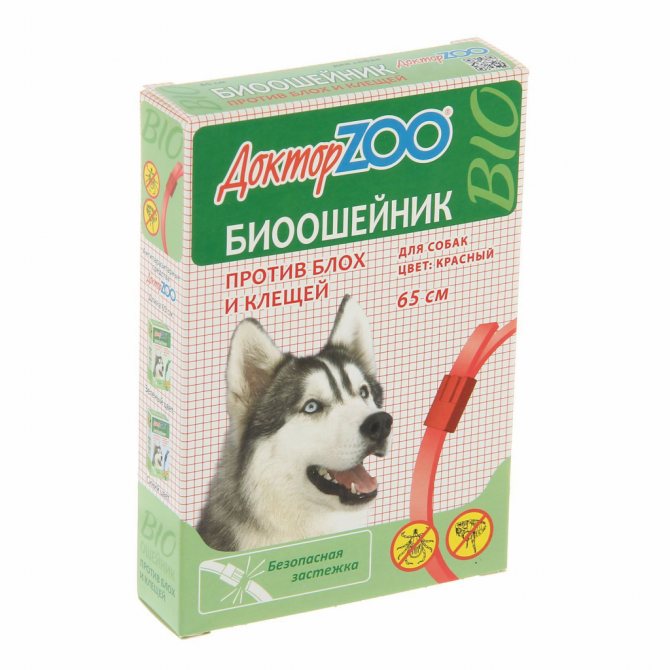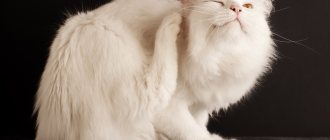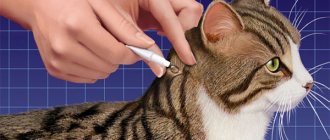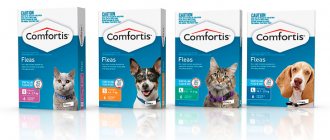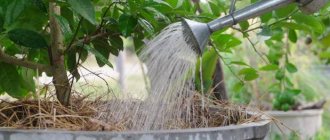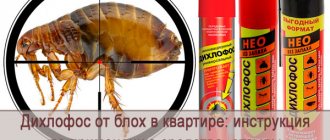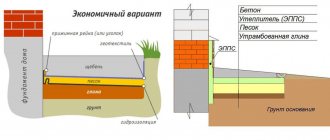A flea collar for cats is one of the methods of fighting ectoparasites (living outside), which is increasingly popular with caring animal owners.
It attracts with its convenience: you have fastened a collar on your pet and you can let it go for a walk without worrying that it will pick up fleas, lice eaters, other ectoparasites, or a tick bite it.
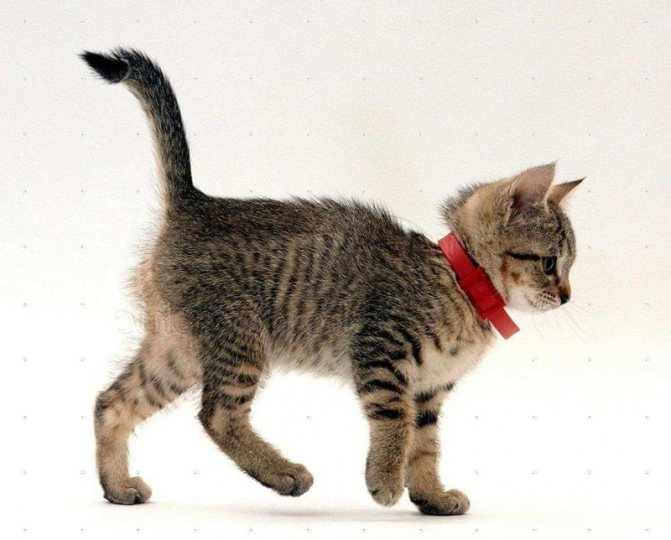
Operating principle
The collar, which prevents infestation by fleas and other harmful insects, is impregnated with a special substance (repellent or insecticide). These are the same toxic compounds found in various shampoos, sprays and other treatments for treating parasites externally in animals. There are also collars that differ in their principle of action: they do not emit substances that are toxic to insects, they work a little differently.
The gradual release of the substance with which the accessory is impregnated, kills existing parasites, and also scares off new ones. That is, such collars are designed both to protect the animal from insects and to expel parasites from an already infected cat.
At the same time, for therapeutic purposes, it is still better to use drugs and antiparasitic agents, since anti-flea collars are less effective in this regard than sprays, drops and shampoos.
However, at the initial stage, when there are few ectoparasites, and they did not have time to cause severe harm to the animal, the collar can help expel them. It is also recommended to use this tool to prevent recurrence of parasite infestation.
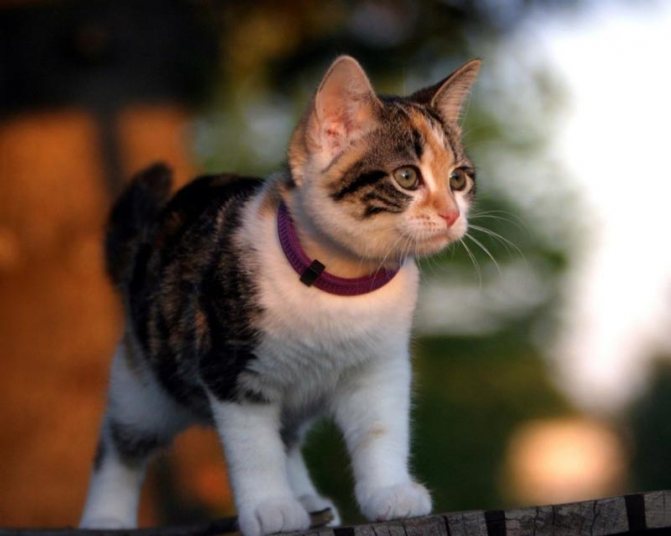

Different types of collars use different impregnations. Among them:
- essential oils, the smell of which scares away parasitic insects (bergamot, neroli, lemon, mint, lavender), such collars are effective as protection, they do not help much to treat an already infected animal;
- Permethrin, a highly toxic insecticide, is recommended for expelling ectoparasites (such collars should not be worn for a long time);
- Sevin is an insecticide that has a pronounced effect, has a wide spectrum of action, is moderately toxic;
- Imidacloprid is a widely used neuroparalytic insecticide;
- Propoxur - a substance used as an insecticide, moderately toxic, perfectly helps to scare away and destroy parasitic insects;
- Phenotrin is an insecticide, used as an anti-pediculosis agent in humans, it helps well to fight parasitic insects in animals;
- Fipronil is a widely used insecticide that works with various types of ectoparasites;
- Metropen is an aggressive and effective insecticide (when used, it can cause serious harm to a cat, therefore it is strictly not recommended for use for kittens);
- Diazinon is an insecticide of contact action that effectively repels and expels ectoparasites (can provoke severe allergies).
All collars against parasites are recommended to be put on the cat in advance (if you plan to go out into the countryside) so that the active substance has time to be distributed throughout the body.
Possible negative consequences
A common side effect is allergies, especially when using strong insect poisons as an active ingredient, such as permethrin, tetrachlorvinphos.
Possible consequences:
- Itching.
- Sneezing.
- Convulsions.
- Fainting.
- Coordination disorders.
- Decreased activity.
Symptoms of an allergic reaction, poisoning often appear within 1-6 hours after the action of the active substance.
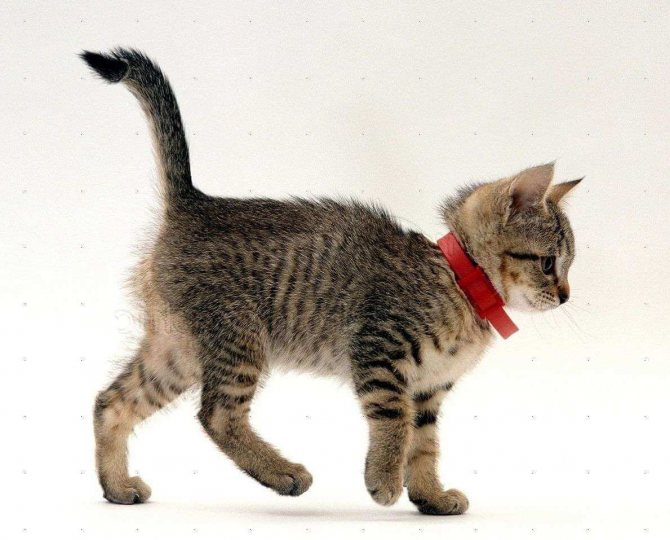

Varieties
All anti-flea collars can be divided according to the principle of action into the following groups:
- bio-collars - they use plant oils that scare away insects, as they are highly poisonous for them (celandine, bergamot, lavender, geranium, mint);
- insecticidal - impregnated with special substances that destroy insects;
- emitting - they broadcast waves (most often electromagnetic) into the surrounding space, which scare off ectoparasites;
- ultrasonic - they emit high-frequency sounds (outside the range that can be heard by the human ear, which insects perfectly hear, and they do not like it) using a built-in emitter.
Collar for kittens
These crumbs still have extremely weak immunity, and therefore parasites are a special threat to them. Because of their weak immunity, the little ones need their own, special product - a flea collar for kittens. These are bio-products, they do not contain toxic substances, except for their main function - to scare away insects, they drive away mosquitoes, and also have a positive effect on the skin and fur of the crumbs. But they can be worn on kittens that do not have fleas, otherwise the effectiveness will decrease.
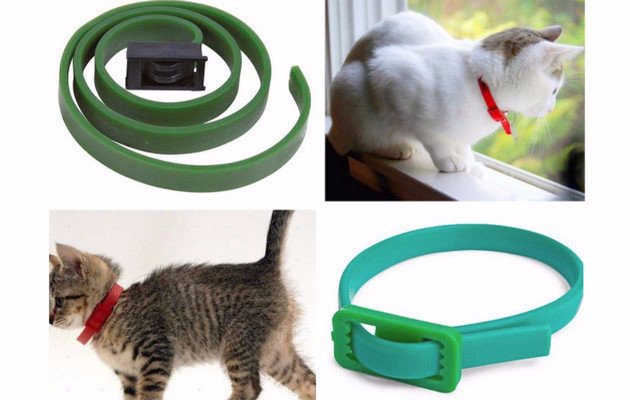

Terms of use
Collars against various parasites have an adjustable length and a special fastener. The accessory should be worn so that it fits the cat's neck as tightly as possible, but does not press (a finger should pass between the body and the product). The remaining tip must be cut off.
It is necessary to ensure that the cat does not try to reach the protective device with its tongue. This is difficult for an animal, and it may well lick the dangling tip.
Protective agent should not be printed before direct use. The bag is opened before putting it on the cat so that the collar does not start working earlier. The term of application is indicated in the instructions.


After this time, the collar becomes a common accessory that is unable to protect the animal. Also, when buying funds in a pharmacy or pet supply store, you should pay attention to the date of manufacture and the deadline for the sale of the product, check if the packaging is not broken.
Manufacturers recommend using flea collars in isolation. That is, it is forbidden to use other methods of protection against insects simultaneously with this agent.
If the cat already has fleas, lice or other ectoparasites, then it is better to first treat the animal with drops, sprays or other means prescribed by a doctor, and then use the collar as a prophylaxis for subsequent infections.
If the product is used in conjunction with other means against ectoparasites, this can lead to an overdose of toxins, that is, the pet will be poisoned.
When using the collar, you must strictly follow the instructions. This will help protect your pet cat from unwanted effects. There are known cases of poisoning when using anti-flea collars.
Most often, intoxication occurs because the owners incorrectly used the protective agent, for example, did not cut off the dangling ends.
Do not use a collar for a cat that is intended for other types of animals. As a rule, the doses of the insecticide are calculated taking into account the species, age and approximate weight of the animal, as well as its individual characteristics.
Advantages and disadvantages
Flea collars are gaining in popularity as they are easy to use, relatively inexpensive and effective.
The advantages of this protection method include:
- ease of use (unlike some other products, it does not require additional procedures, for example, washing or combing);
- safety (isolated cases of poisoning are associated, rather, with the wrong use or choice of an accessory, since the dosage of the product is calculated in amounts that are safe for the cat);
- there are special models to protect kittens, cats during pregnancy and lactation;
- a wide choice in quality and price (you can choose the most suitable collar for a cat, based on your own financial capabilities, while not losing quality);
- high efficiency (used for both prevention and treatment).
The collar creates an invisible, but reliable barrier for parasitic insects, so when walking the cat is protected from infection. In addition, the accessory on the neck of the animal indicates that it has owners.
This helps to prevent hazards such as fences at shelters or other establishments when stray cats are being trapped.
In addition, flea collars indirectly help protect your cat from worm infestation. Many species of parasitic insects carry the eggs of worms, and infection with ectoparasites often leads to helminth infestation. The cat chews off fleas, lice and other external parasites, as a result of which the eggs they carry can enter the gastrointestinal tract.
This is dangerous not only for the cat itself, but also for its owners, because many types of helminths are common to animals and humans.
The collar will protect the cat not only from infection with parasites, but also from the bites of blood-sucking insects that do not belong to this class. Ticks are just as dangerous to cats as they are to humans. In addition to significant discomfort from a stuck tick, the cat can become infected with infections that it carries.
The disadvantages of flea collars include their relatively low efficiency when used for therapeutic purposes. Veterinarians recommend them precisely as a prophylactic agent, reliable in order to protect against infection.
To treat a cat that has already picked up ectoparasites, it is more effective to use other means. In the initial stages, when there are few parasites, the collar also helps to expel them. Therefore, it cannot be called completely ineffective for treatment.
Also the disadvantage is the limited time of use. Over time, the collar loses its protective properties when all the active ingredient is exhausted. Nevertheless, it will last at least a month.
Most often, the periods of application are somewhat longer, there are models that are active for six months or more.
The likelihood of intoxication, which intimidates many cat owners, is low. However, there is a risk, especially if the protective equipment is used incorrectly. In the overwhelming majority of cases, the responsibility for the negative consequences lies with the owner, who purchased a cheap and low-quality item of protection, used it incorrectly or neglected the instructions.
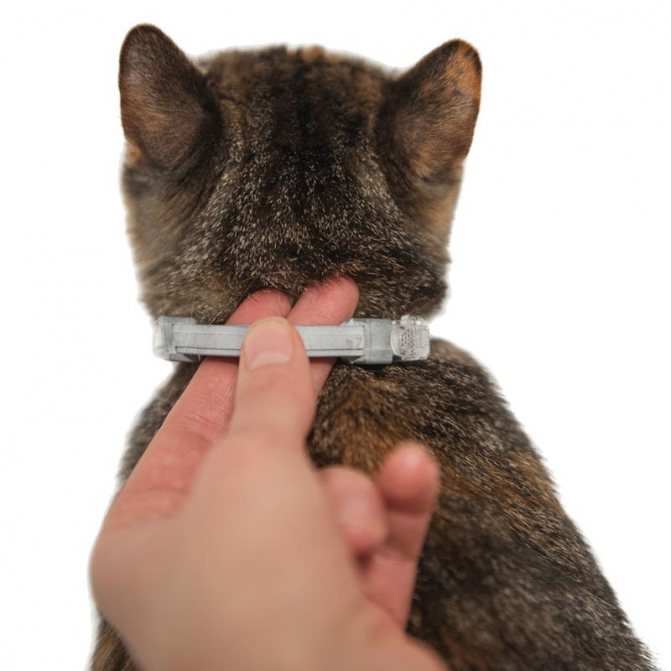

An active, mobile cat can accidentally catch the collar on an object, leading to asphyxiation and death. All types of collars have this disadvantage, not only anti-flea collars.
However, cats are cautious and intelligent animals, so the risk of strangulation is great if the collar is used to protect an unreasonable kitten. An adult cat can also get hurt, but these are rather exceptional cases.
Products often cause allergic reactions. When choosing this accessory, you should take into account the individual characteristics of the animal. If there are negative side effects in response to the use of a flea collar, remove it immediately. In case of intense manifestations, it is imperative to show the cat to the veterinarian.
How to use the product


Some breeders use the flea collar as a decorative accessory
Remember that flea eggs, and insects themselves, can be found not only on the fur of the animal, but also on the carpet, upholstery, in the bed of a four-legged friend, in the toilet, in the floor crevices and behind the baseboards. If your pet has already been attacked by parasites, the fight against fleas is not limited to the processing of cat hair, it is necessary to thoroughly vacuum the entire room with a vacuum cleaner. The pet's bedding should be thoroughly washed, or better - boiled or treated with cleaning agents. If fleas or their bites are found in an animal, veterinarians advise the cat itself to be thoroughly washed with an anti-flea shampoo, and after a few days, put on a collar with an insecticide on the pet. Consider the following guidelines:
- stretch the elastic band slightly to activate the active ingredient;
- if the animal is aggressive, put on gloves and long-sleeved clothing to protect it from scratches;
- do not use the collar if the cat has been treated with other types of anti-flea products (drops, spray, etc.);
- the collar should be fixed, not topple over, but also not to squeeze the neck - the gap should be about 1–2 cm;
- follow the instructions for use of the collar exactly;
- make sure the cat cannot paw off the collar or lick it;
- cut off or leave in place, depending on the manufacturer's instructions;
- when the collar is on, give your pet a treat, a new toy - this will distract him from the desire to remove the accessory;
- wash your hands thoroughly after handling the collar;
- make sure that children do not touch the cat collar, because it contains poison;
- if there are signs of allergy in an animal or household to the components of the product, it must be removed and disposed of;
- if the collar needs to be removed for a while, store it in a tightly sealed bag so that it does not dry out.
Some experienced breeders advise against using a free-range flea collar. In the natural environment, this tape on the neck can interfere with the existence of an animal - cling to branches and protrusions, contribute to injury during a fight with relatives.
Video: the use of a collar from fleas and ticks - shows the veterinarian
Contraindications
If the owner wants to protect the cat from possible infection with ectoparasites, the collar is perfect. However, when choosing it, you should take into account some points.
Poisonous substances with which the accessory is impregnated can harm the animal. This is especially true for weakened cats with low immune status.
Collars are not recommended for sick, weak or very elderly cats.
Manufacturers do not advise using such remedies for pregnant or nursing cats. Young age up to 1.5-2 months is also a contraindication.
However, for these categories of animals, special collars have already been developed, in which these features are taken into account, the dosages of toxic substances have been reduced. When purchasing a collar, be sure to take into account the age and condition of the pet.
For kittens and cats expecting offspring, an ultrasonic collar may be more suitable. The disadvantage of this kind of products is the high price.
The best decorative collars for cats
Trixie reflective collar
![Collars for cats [from fleas, decorative]: reviews, do it yourself](https://bgn.imadeself.com/wp-content/uploads/oshejniki-dlya-koshek-ot-bloh-dekorativnye-otzyvy-svoimi-rukami.jpg)
![Collars for cats [from fleas, decorative]: reviews, do it yourself](https://bgn.imadeself.com/wp-content/uploads/oshejniki-dlya-koshek-ot-bloh-dekorativnye-otzyvy-svoimi-rukami.jpg)
This accessory is offered in several colors, it is made of nylon and is additionally equipped with a bell.
A reflective collar costs 90 rubles in Russia, and 42 hryvnia in Ukraine.
Collar CoLLaR GLAMOR
![Collars for cats [from fleas, decorative]: reviews, do it yourself](https://bgn.imadeself.com/wp-content/uploads/oshejniki-dlya-koshek-ot-bloh-dekorativnye-otzyvy-svoimi-rukami2.jpg)
![Collars for cats [from fleas, decorative]: reviews, do it yourself](https://bgn.imadeself.com/wp-content/uploads/oshejniki-dlya-koshek-ot-bloh-dekorativnye-otzyvy-svoimi-rukami2.jpg)
The case when the name speaks for itself. It should be noted that the collar has an elastic band for kittens and a bell for scaring away birds and mice.
Price 87 rubles / 40 hryvnia
Collar for cats Karlie ART JOY PLUS
This accessory is made of fabric and is art-historically decorated with prints in blue or pink tones.
Price 127 rubles / 59 hryvnia
Collar PRINCESSE with stones SWAROVSKI
Natural leather, fine crystal granules in three rows - this is pure fashion for a cat from the French company Bobby.
Price 900 rubles / 380 hryvnia
For kittens and pregnant cats
A small kitten has a weak immune system, so it needs to be protected from negative external influences. For a baby, infection with parasites is especially dangerous, since his body cannot yet effectively resist diseases. At the same time, the popular and effective collars containing insecticides can cause irreparable harm to the kitten.
Veterinarians advise using bio-collars that do not contain pesticides to protect babies. They work due to essential oils that parasitic insects cannot tolerate.
The same remedies are recommended to be used for cats bearing offspring.
DIY cat collar
Making a simple decorative collar yourself is not at all difficult at all.
Several options are demonstrated in this video:
For a simple (but beautiful) collar, you will need:
- Thin leather or leatherette strap;
- Awl;
- Beautiful bead or pendant;
- Metal ring;
- Round nose pliers;
- Scissors;
- Centimeter.
- Use a soft centimeter to measure the circumference of the cat's neck + two of your fingers;
- Use scissors on the side of the holes to shorten the strap to the desired size;
- Use an awl to make a new hole for the fastener;
- With an awl, make a hole into which insert a metal ring with a pendant on it.
The Handmade collar is ready!
Another option on the video
Mister Cat recommends: rating of the best
The market for pet products today has a huge selection of products for parasites with a wide variety of characteristics. It is easy to get confused, especially if such a product is purchased for the first time. Here are the TOP of reputable manufacturers, whose products for cats can be purchased without fear.
The most popular are the following companies:
- Beaphar (Holland);
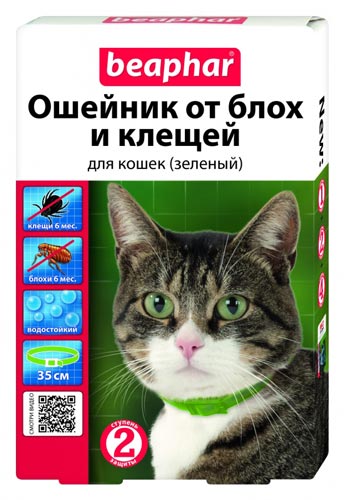

- Hartz (USA);
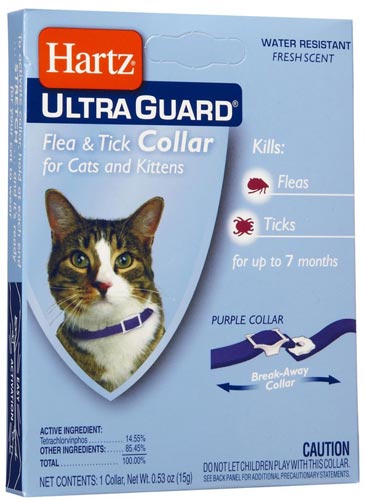

- Bolfo (Germany);


- Doctor Zoo (RF);


- Bars (RF).


There are also Chinese manufacturers on the market. Despite the fact that today goods from this country have increased significantly in quality, drugs, collars and other things for animals made in China are not worth buying. These are cheap, but not very high-quality products, and you can only bring harm to your pet. It should also be borne in mind that the situation may change over time.
It is necessary to take into account the large number of counterfeits produced in packages similar to the goods of well-known and reputable brands. When choosing a product, you should not fall for such an advantage as low cost, because cheap goods are rarely of high quality.
Comparative characteristics of flea collars
When choosing a protective product for your cat, you should focus on several criteria. Let's consider the most popular brands in comparison.
| Brand (cost, rub.) | Period of active action, months | Smell | Rating (percentage of reviews) |
| Beaphar (250-300) | 5-6 | Weak, unsharp | 85/15 |
| Bars (90-150) | 2-3 | Unexpressed | 50/50 |
| Hartz (450-500) | 6-7 | Weak | 98/2 |
| Bolfo (400-450) | 5-6 | 80/20 | |
| Celandine (80-100) | 3-4 | Unexpressed | 50/50 |
| Doctor Zoo (90-120) | 2-3 |
Products from Beaphar, Hartz, Bolfo are highly effective, while their competitors sometimes do not cope with parasites in the required volume.
Inexpensive domestic collars are more effective for preventive purposes, they are almost useless for treatment.
However, such means can provide reliable protection for an animal that has not yet been infected. Imported collars successfully combine efficiency in case of an already occurred infection, long-term use and safety for the animal.

